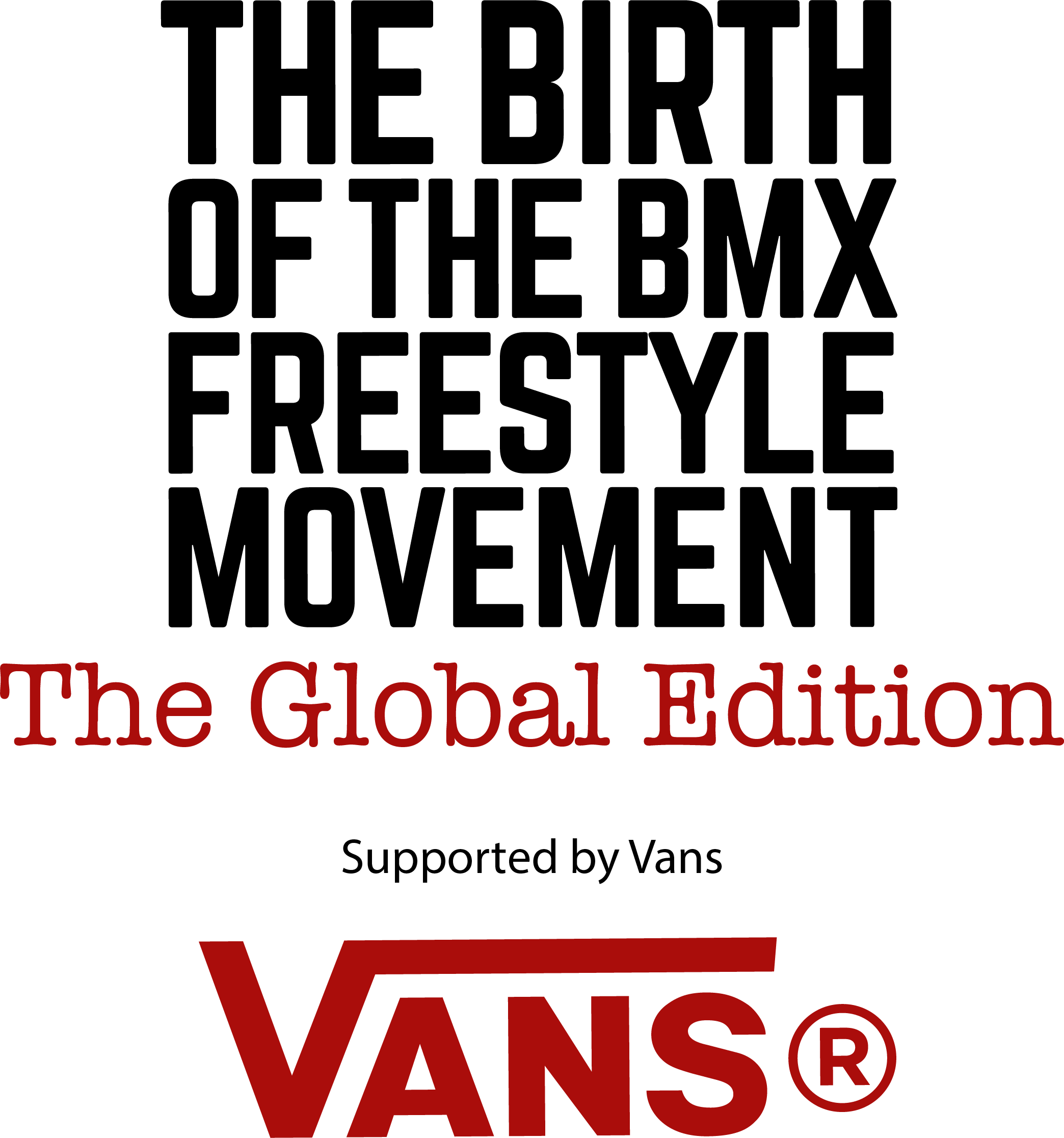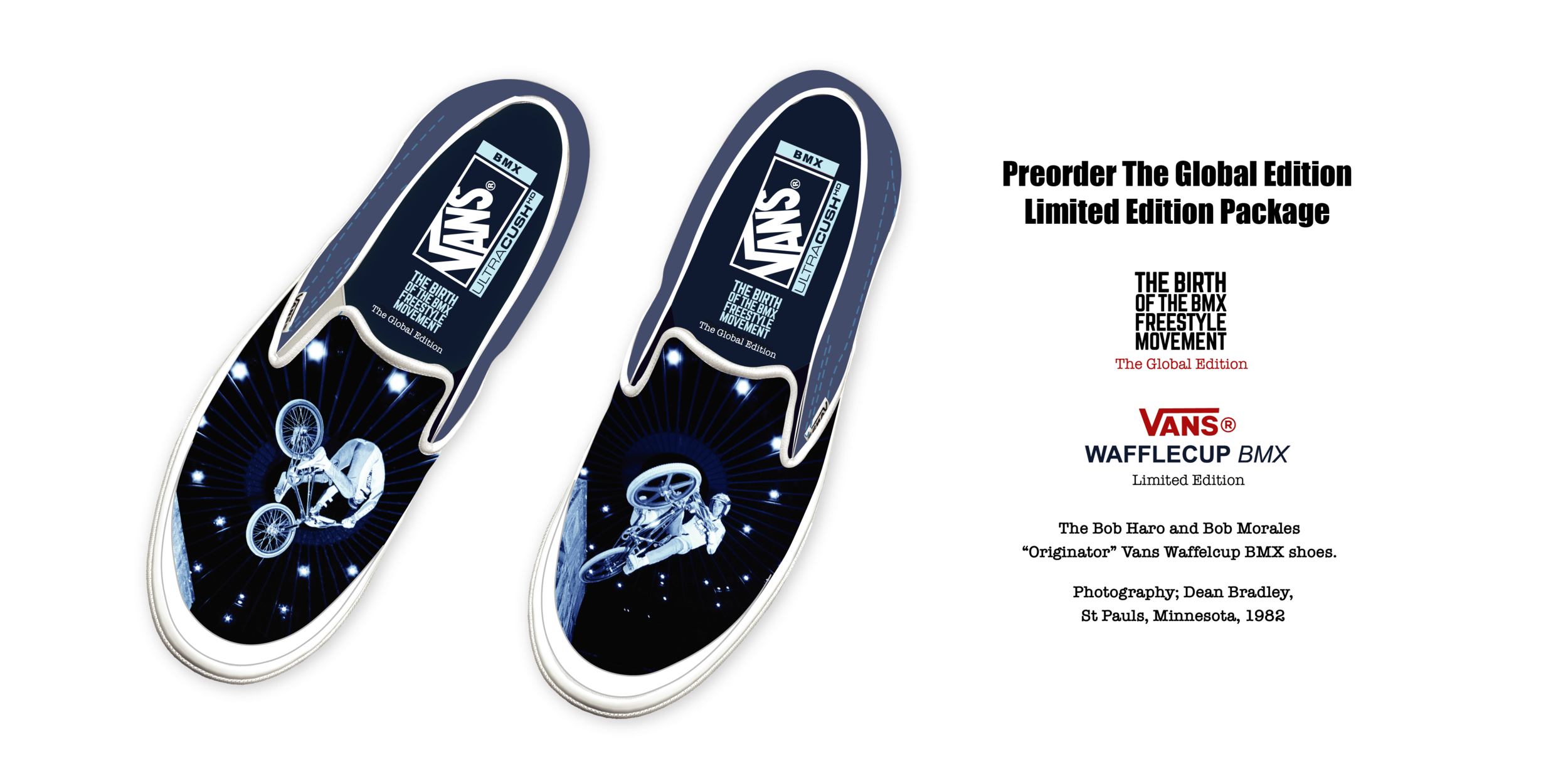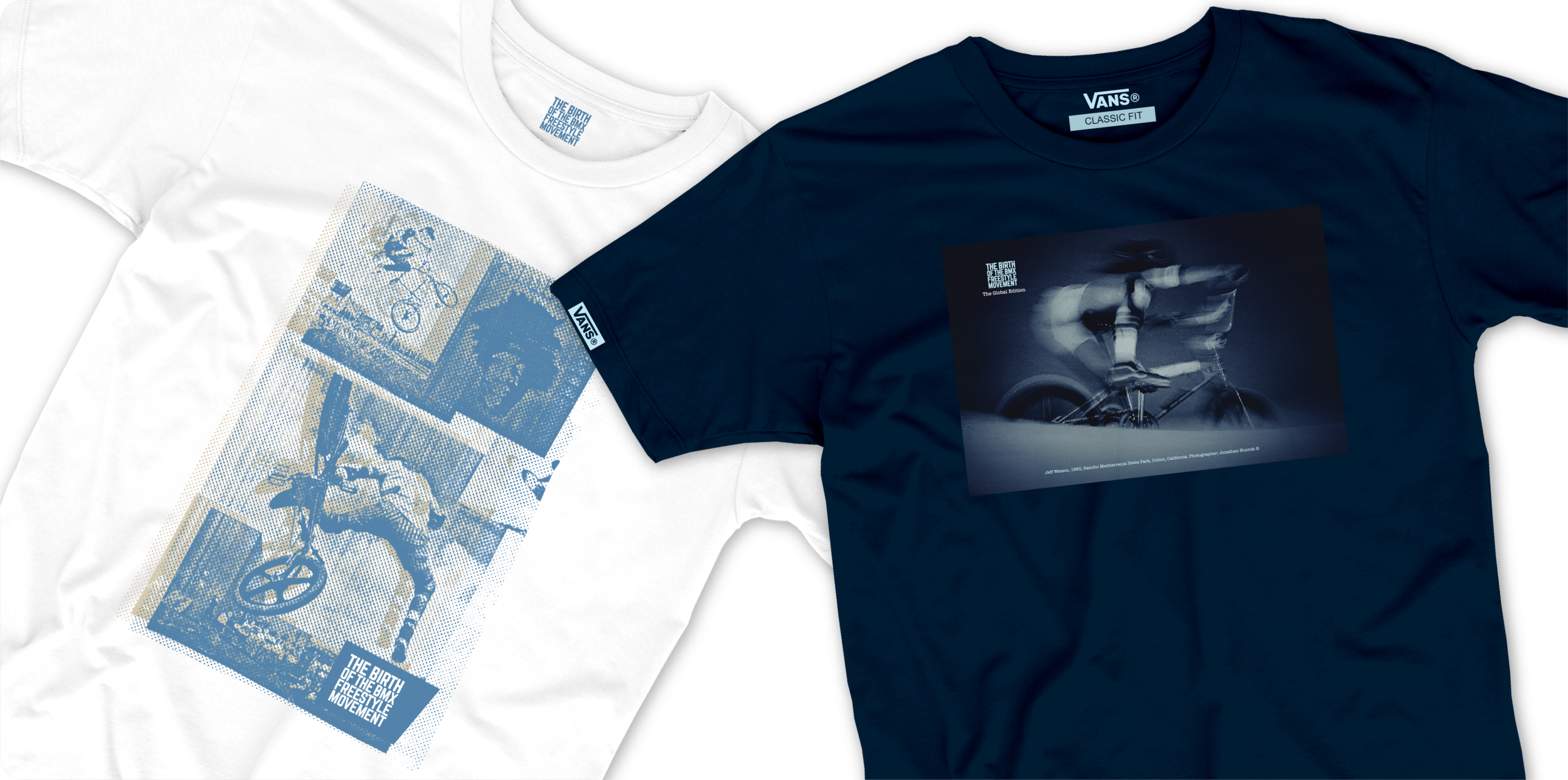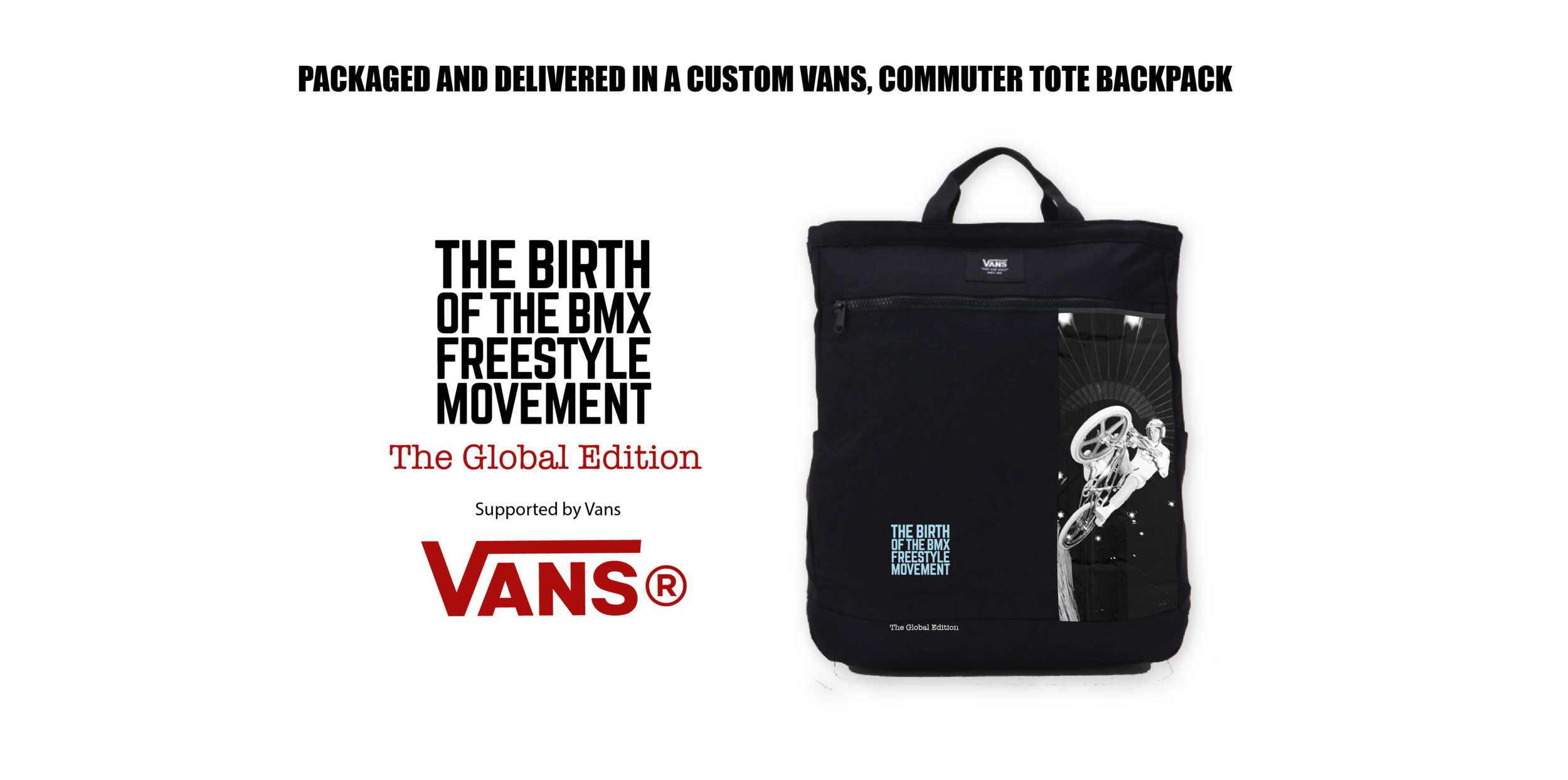
OUT OF THE ETHER
Out of the preeminent 1970's southern California lifestyle, BMX & Skateboarding were born. The rise of these embryonic alternative sports, inspired a new breed of Californian kids to challenge tradition and blaze a trail away from the football fields and baseball diamonds. They were the misfits, the disrupters, the opportunists; they viewed the world through a different lens and embraced the freedom to create something authentic and original without fear or consequence. They built ramps, jumped dirt, and formed a community that was greater than the sum of its parts. A community that built a launchpad for the meteoric rise of Action Sports and a new industry.
Featured Image Main; 1985. Mike Dominguez, Upland Pipeline. shot by Steve Giberson.
Featured Image Right: 1980. Bob Haro and RL Osborn PREP BIKES at Rad Ramps, Costa mesa. shot by Dean Bradley.
PLANTING A SEED

DOWNHILL GENESIS
The spectacular mountain ranges surrounding the LA basin became an epicenter for the emerging California motocross scene during the mid-1960s and 1970s. Now-legendary tracks at Indian Dunes, Saddleback Park, and Lake Elsinore drew young families from the LA suburbs to witness the sport's young titans battle for honors in a haze of dust and blue smoke. An influx of new and affordable lightweight Japanese motorcycles opened the door to mass participation in the 1970s. Friends, colleagues, parents, and neighbors who were once content to watch from the sidelines began pulling on leathers and helmets and lining up shoulder-to-shoulder in the Novice class.
Without question, the formative era of motocross in California became a catalyst for the birth of BMX, underpinned further by the arrival of Bruce Brown's "On Any Sunday" motorcycle racing documentary. Brown centered his feature on AMA Grand Champion Mert Lawwill's progress as he defended his Number 1 Plate during the 1970/71 season. If indeed BMX was destined to exist, Brown captured everything that it needed to be in the movie's opening scenes when he filmed an inspired group of Californian kids racing and jumping Schwinn Stingray bicycles through a dirt lot.
During the early 1970s, dirt jumping and downhill racing in the Santa Monica mountains became a lightning rod for the wannabe motocross kids. Primitive downhill courses through the gnarly, dusty canyons became the proving ground as ordinary Californian kids put it all on the line and transitioned into local heroes. Broken bones and mangled metal frames represented progress, and with it, the BMX Movement began.
Featured Main Image: Tinker Juarez and Mel Stoutsenberger race down Bonzai Hill, Saddleback Park, 1976. Shot by Rick Twomey.
POOLS PARKS AND RECREATION

FLOODING INTO THE VACUUM
In the early 1970s, skateboarding reemerged from its phenomenal rise and fall almost two decades earlier to capture the imagination of a new breed of anti-heroes. Their vision for modern skate culture embraced subversive thinking, experimentation, and ultimately untethering skateboarding from its deep roots in the surfing genre. They challenged every belief and broke every bone, board, and tradition, searching for the ultimate form of self-expression on a wooden deck with four wheels. Their legacy is the birth of Alternative Sports, a modern youth culture that thrives and evolves in every nation on earth.
The introduction of the dual-compound skateboard wheel in the late 1960s became the catalyst for an era of reinvention. The pliable nature of the wheel opened up a world of dynamic possibilities enabling the forward-thinking skaters to create traction and experiment on paved vertical surfaces. As skateboarding entered this new age, hundreds of cement skateparks were constructed across southern California. Still, due to safety concerns and rising liability insurance costs, many of the parks closed and were demolished in the late 1970s. Consequently, during the summer of 1980, skateboarding was rapidly cycling through to the conclusion of its second-era boom.
BMX Trick-Riding emerged from the shadow of BMX racing in the early 1980s. From within the inner city neighborhoods of East and West Los Angeles, San Diego, Orange County, and Riverside, kids jumped the fences of local skate parks after hours to carve the bowls and banks on their bikes. As the core skate community dissolved into the ether, bike riders flooded into the vacuum and offered a temporary lifeline to the remaining park owners. The riding standard evolved and improved rapidly as a new generation pushed the imaginable limits of bicycle pool-riding and ushered in a competitive era.
FEATURED IMAGE; 1980. Curtis Cummins carves the Fish Bowl in Riverside under the watchful eye of LOCAL bike riders. Shot by Jonathan nourok.
NO CONTEST
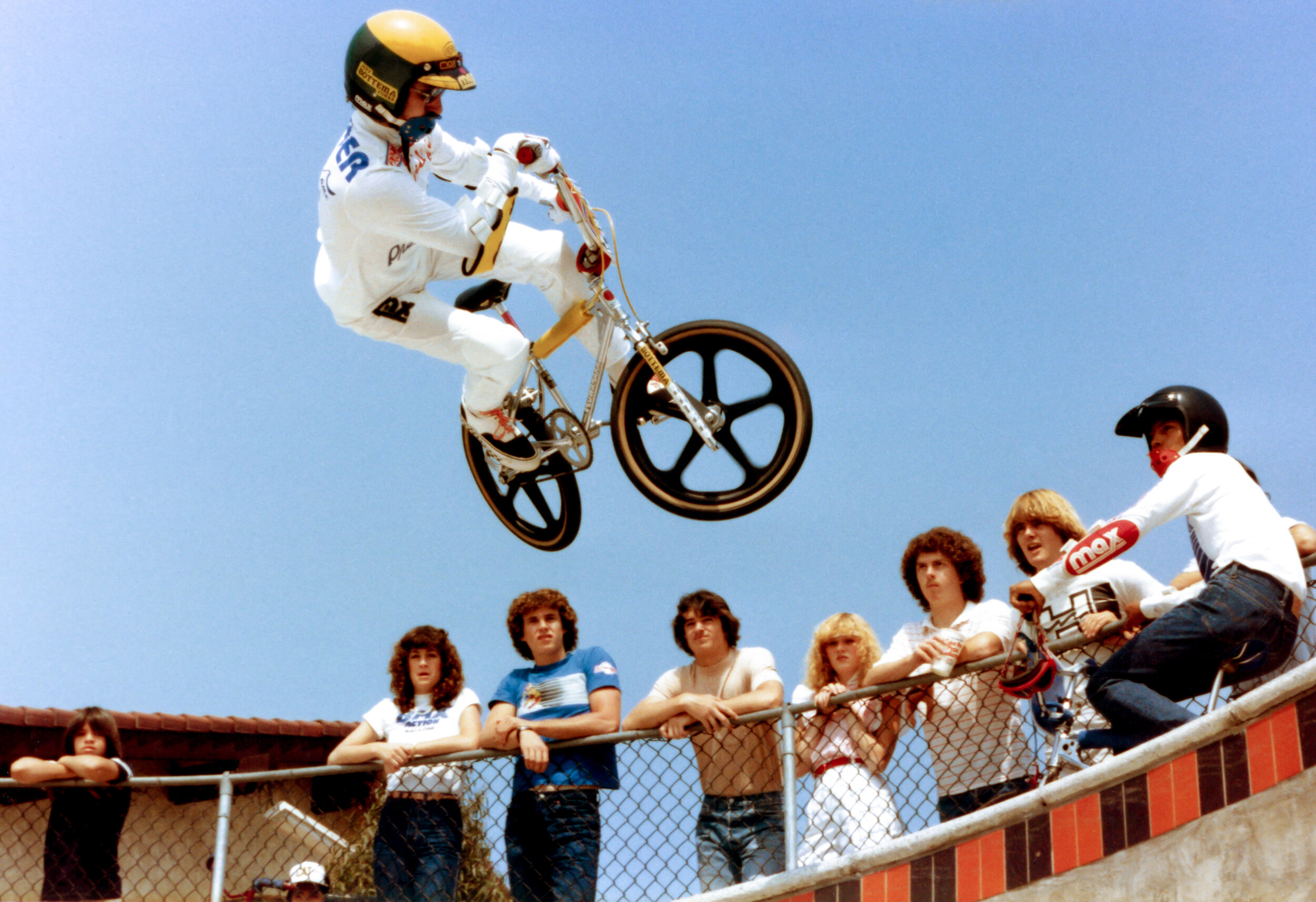
THE ORIGINS OF AN ACTION SPORT
Three SoCal parks pivoted and embraced the arrival of the bike riders. The Pipeline, in Upland, Skate City, in Whittier, and the Del Mar Skate Ranch, became the arena for the early King of the Skateparks contest series'. Promoter, Bob Morales, hustled industry friends for sponsorship and secured an exclusive agreement with BMX Action Magazine Publisher Bob Osborn for media coverage. Teenage riders from ordinary neighborhoods and cities across Southern California converged on the three parks - local heroes with reputations and a point to prove. The series was so successful that it ultimately reinvented the culture of BMX Freestyle, transitioning it away from its "performance" roots and enabling genuine competition. In January 1984, Morales realized an ambition when he introduced a professional category and founded the American Freestyle Association.
FEATURED IMAGE; MAY 1982. FRED BECKER HANGS HIS HIP IN THE KEYHOLE AT WHITTIER’S SKATE CITY IN PRACTICE FOR THE INAUGURAL KING OF THE SKATEPARKS CONTEST. RL OSBORN, BOB MORALES, MIKE BUFF, AND RICH SIGUR WATCH ON.

A COTTAGE INDUSTRY
Across the wider industrial landscape of southern California, the developing world of BMX inspired young visionaries to take their first steps on the path to entrepreneurialism. They hustled resources, designed innovative products, and created the inspirational brands that energized the new movement's growth. Through the leadership and passion of this committed community of riders, entrepreneurs, photographers, and journalists, an action-packed decade of evolution played out under the palms and clear blue skies of southern California.
The Global Edition of The Birth of the BMX Freestyle Movement is a 400-page oral history book that tracks the rise of a modern action sport from its origins in the mid-1970s and through its arc of cultural evolution in the 1980s. With chapters dedicated to the key catalysts for the proliferation of BMX Freestyle - the first Haro Freestyle Tour, Wizard Publications, the AFA Contest scene, the BMX Action Trick Team, UK Freestyle History, and the Factory Tours, among others - this new edition dives deep into the origin story of BMX Freestyle to life 40-years after the movement began. The story is told via extensive interviews with over 150 pivotal contributors from the era.
